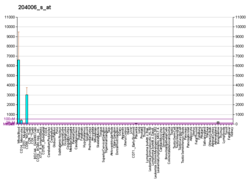| FCGR3B | |||||||||||||||||||||||||||||||||||||||||||||||||||
|---|---|---|---|---|---|---|---|---|---|---|---|---|---|---|---|---|---|---|---|---|---|---|---|---|---|---|---|---|---|---|---|---|---|---|---|---|---|---|---|---|---|---|---|---|---|---|---|---|---|---|---|
 | |||||||||||||||||||||||||||||||||||||||||||||||||||
| |||||||||||||||||||||||||||||||||||||||||||||||||||
| Identifiers | |||||||||||||||||||||||||||||||||||||||||||||||||||
| Aliases | FCGR3B , CD16, CD16b, FCG3, FCGR3, FCR-10, FCRIII, FCRIIIb, Fc fragment of IgG receptor IIIb, CD16A, FCGR3A, Fc gamma receptor IIIb, CD16-I | ||||||||||||||||||||||||||||||||||||||||||||||||||
| External IDs | OMIM: 610665; MGI: 2179523; HomoloGene: 477; GeneCards: FCGR3B; OMA:FCGR3B - orthologs | ||||||||||||||||||||||||||||||||||||||||||||||||||
| |||||||||||||||||||||||||||||||||||||||||||||||||||
| |||||||||||||||||||||||||||||||||||||||||||||||||||
| |||||||||||||||||||||||||||||||||||||||||||||||||||
| |||||||||||||||||||||||||||||||||||||||||||||||||||
| |||||||||||||||||||||||||||||||||||||||||||||||||||
| Wikidata | |||||||||||||||||||||||||||||||||||||||||||||||||||
| |||||||||||||||||||||||||||||||||||||||||||||||||||
FCGR3B (Fc fragment of IgG, low affinity IIIb, receptor), also known as CD16b (Cluster of Differentiation 16b), is a human gene. [5]










